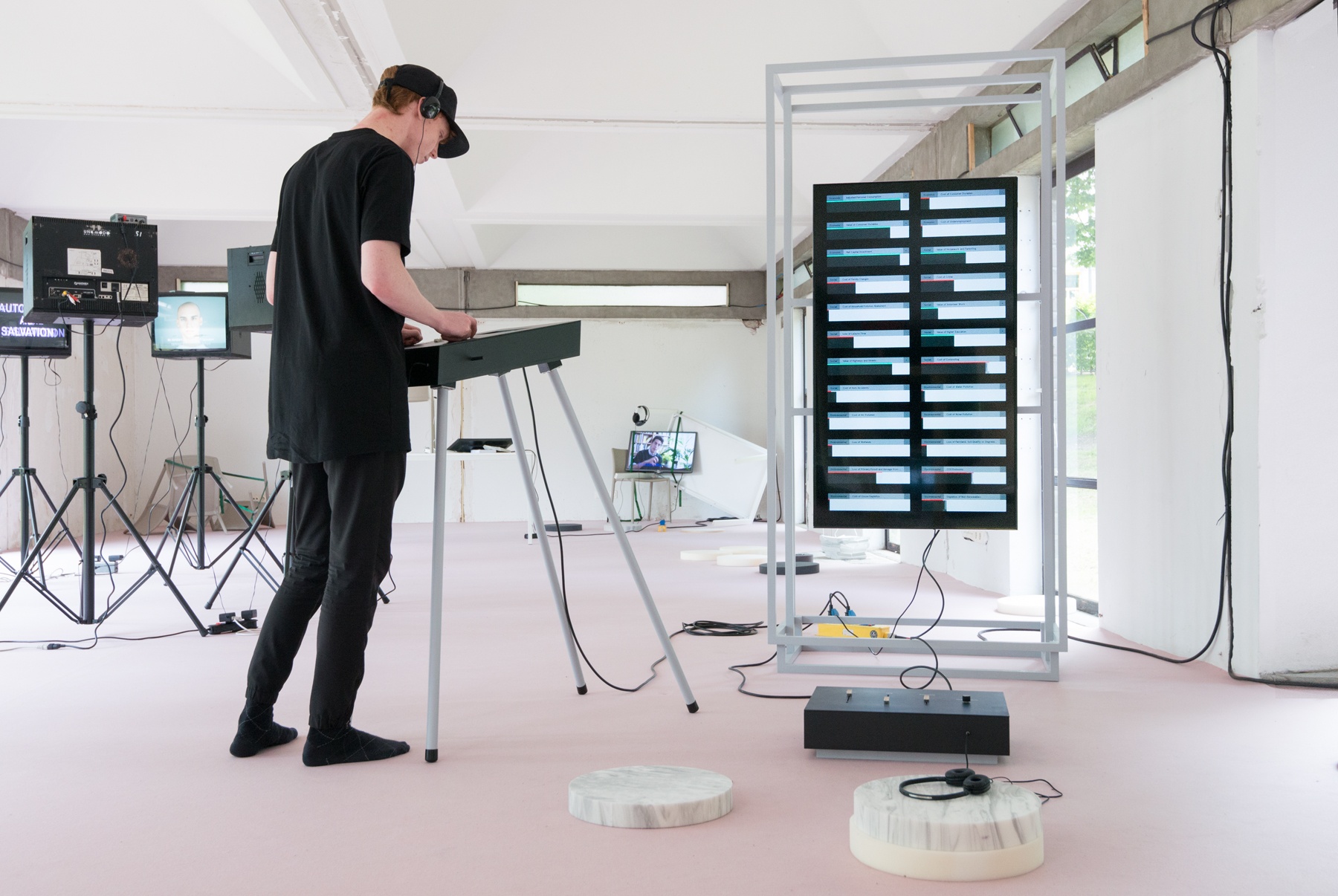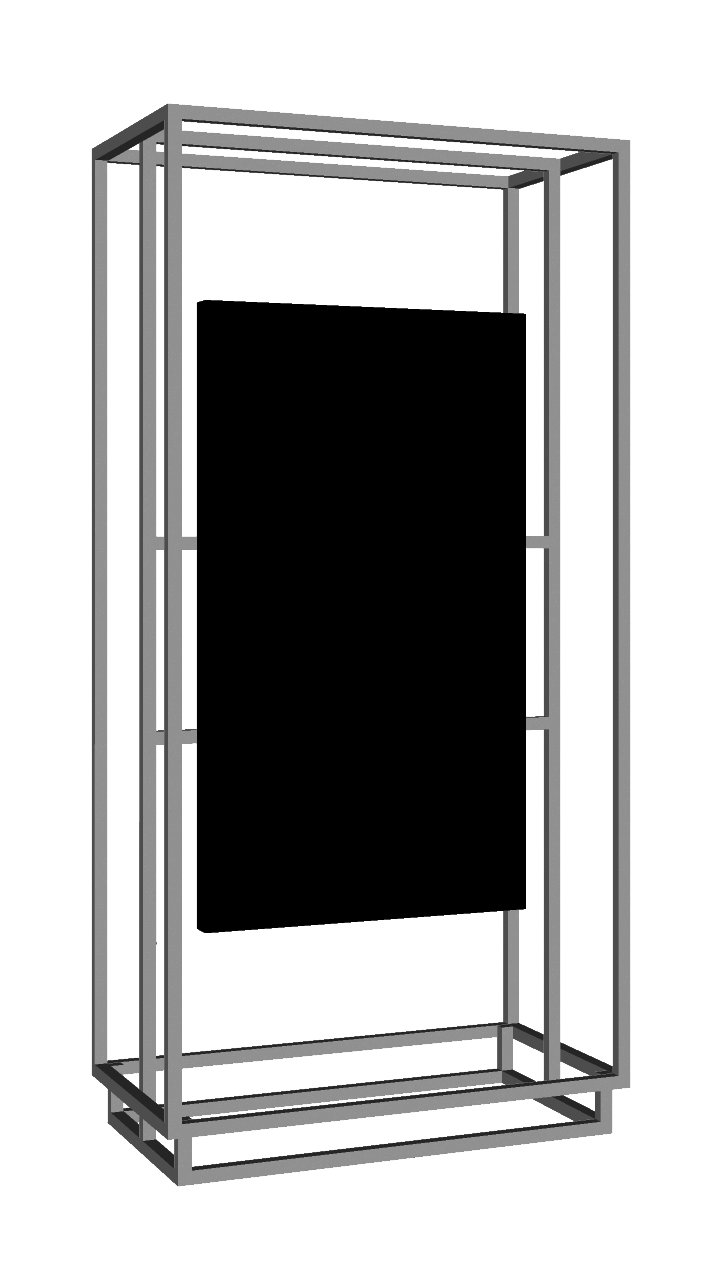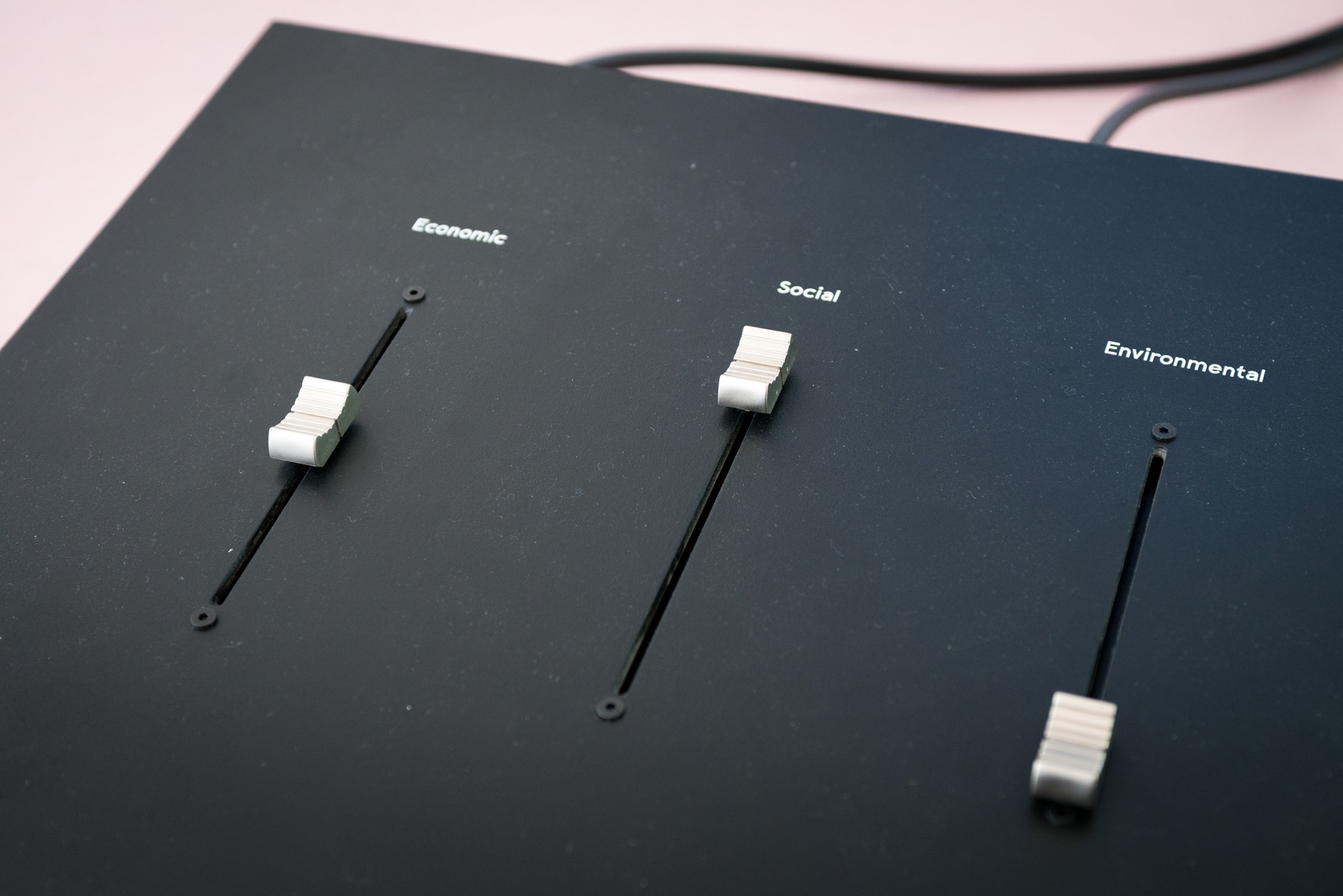
Political Automata setup for the Designing Democracy show.
Political Automata is an ongoing series of objects that question the future role of humans in the act of policy-making. In this imagined future, policy will be calculated based on algorithmic principles and machine learning. As with any other manifestation of automation, political automata demand a reconfiguration of the human function. Future politics will no longer deliberate on how issues should be solved — instead, society must provide political machines with a sense of morality by inputting desired ethical parameters. We must determine what in our view is a just society, thus moving politics closer to the methods of philosophy.
We the machine
We the machine was originally produced as part of the Imagine Europe exhibition in Bozar Brussels in collaboration with Iskra Vuksic (Croatia). It is a voting machine accompanied by a voiceover guiding you through the process. Since policy is no longer produced by politicians as today would be the case, it does not ask you to vote on a party. In stead it functions more like a vote matching website, presenting you with certain cases that have to be answered by moving a slider/scale. The questions asked are of a confronting and philosophical nature in order to calculate back to influence the following parameters (Basis of society, Freedom, Safety, Compassion, Equality, Economic growth, Obligations, Identity). It is the collective score on these parameters that would be fed into future policy-producing-algorithms. At the end of the voting procedure you will be presented with a slip of paper showing a graph abstractly representing the results of your personal parameters, and a conclusion how you differ or overlap with the collective vote.

Parameter outcomes



Economic, Social and Environmental sliders.
Supercomputer
This object consists of a large screen in a frame and a controller object with three sliders. It is an attempt to show how an algorithm would already be capable of making basic decisions with very limited user input. The screen shows all factors that are part of a progress indicator that is used (in some countries) to determine how well a society is performing, the Genuine Progress Indicator. They are divided over three categories: Economic, Societal and Environmental factors. The factors either have positive or negative impact on our society, profit from investments are a positive factor, but they might result in damage to the environment — a negative factor. All these factors are connected, some strongly, some have almost no correlation. Based on all the correlations (which are randomly generated in this project) the algorithm is trying to find the best combination of positives and negatives, finding the best society. This results in a constantly flickering screens of bars in the quest for a better answer. When a slider on the controller is moved, the weight is distributed differently over the three categories of factors, when the Economic slider is pushed forward the other two sliders will automatically (motorised) slide back and become less important for the algorithm. As a result the calculation on the screen visually moves into a new area.

Political Automata setup for the Designing Democracy show.
Political Automata is an ongoing series of objects that question the future role of humans in the act of policy-making. In this imagined future, policy will be calculated based on algorithmic principles and machine learning. As with any other manifestation of automation, political automata demand a reconfiguration of the human function. Future politics will no longer deliberate on how issues should be solved — instead, society must provide political machines with a sense of morality by inputting desired ethical parameters. We must determine what in our view is a just society, thus moving politics closer to the methods of philosophy.

Parameter outcomes
We the machine
We the machine was originally produced as part of the Imagine Europe exhibition in Bozar Brussels in collaboration with Iskra Vuksic (Croatia). It is a voting machine accompanied by a voiceover guiding you through the process. Since policy is no longer produced by politicians as today would be the case, it does not ask you to vote on a party. In stead it functions more like a vote matching website, presenting you with certain cases that have to be answered by moving a slider/scale. The questions asked are of a confronting and philosophical nature in order to calculate back to influence the following parameters (Basis of society, Freedom, Safety, Compassion, Equality, Economic growth, Obligations, Identity). It is the collective score on these parameters that would be fed into future policy-producing-algorithms. At the end of the voting procedure you will be presented with a slip of paper showing a graph abstractly representing the results of your personal parameters, and a conclusion how you differ or overlap with the collective vote.


Supercomputer
This object consists of a large screen in a frame and a controller object with three sliders. It is an attempt to show how an algorithm would already be capable of making basic decisions with very limited user input. The screen shows all factors that are part of a progress indicator that is used (in some countries) to determine how well a society is performing, the Genuine Progress Indicator. They are divided over three categories: Economic, Societal and Environmental factors. The factors either have positive or negative impact on our society, profit from investments are a positive factor, but they might result in damage to the environment — a negative factor. All these factors are connected, some strongly, some have almost no correlation. Based on all the correlations (which are randomly generated in this project) the algorithm is trying to find the best combination of positives and negatives, finding the best society. This results in a constantly flickering screens of bars in the quest for a better answer. When a slider on the controller is moved, the weight is distributed differently over the three categories of factors, when the Economic slider is pushed forward the other two sliders will automatically (motorised) slide back and become less important for the algorithm. As a result the calculation on the screen visually moves into a new area.

Economic, Social and Environmental sliders.